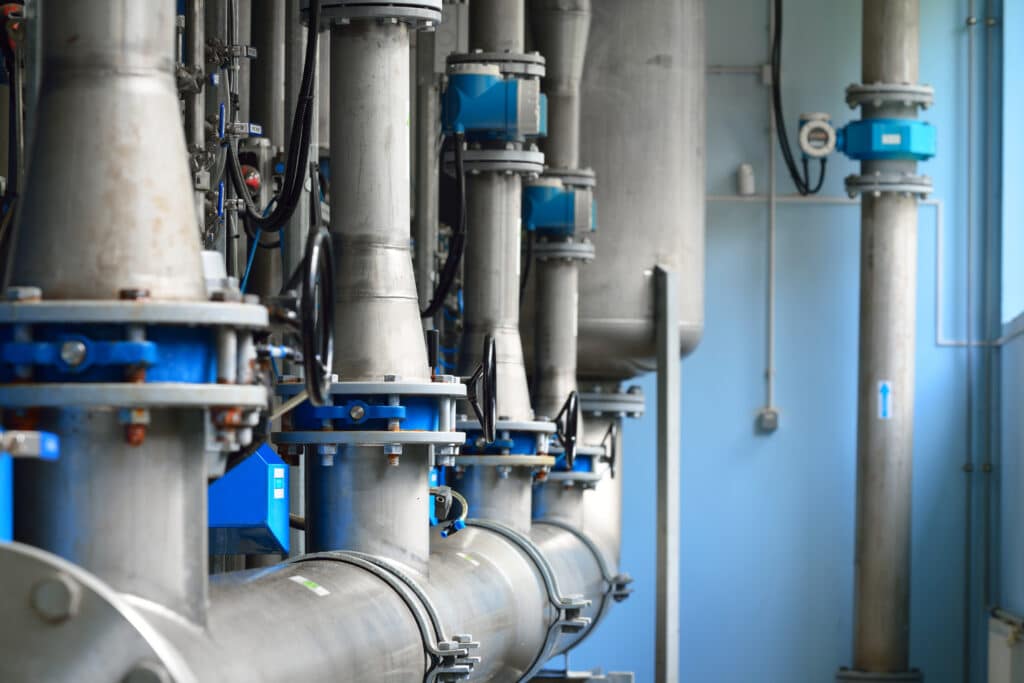Plant rooms are instrumental to the seamless operation of commercial developments, enabling important heating and hot water supplies to run throughout a premises. However, when it comes to plant room upgrades, there are many considerations architects and contractors have to make to ensure these works are undertaken as safely and efficiently as possible and disruption is kept to a minimum. But what are the considerations and challenges, and how can they be overcome?
Importance of plant rooms
Key to the efficiency of buildings are plant rooms. Plant rooms are at the core of a building, housing essential equipment needed to supply ventilation, electrical distribution, water and other building services, and they have to be regularly maintained and upgraded to ensure a building performs correctly.
Although essential to building operation, during the design phase plant rooms are quite often an afterthought and are built in inaccessible locations. This current approach has implications when it comes to plant room upgrades as the unconsidered location of a plant room can make it difficult to access or take out the equipment needing replacing. This could mean it is necessary to take a plant room offline to replace a boiler.

A temporary boiler is needed because quite often contractors will be reconfiguring and changing various pieces of equipment, which means they need the guarantee that they’ll be able to keep the heat on when these big changes are happening.
While it can be tempting to keep a plant room live during an upgrade and tinker with the equipment, taking it offline and installing a temporary boiler gives clients the flexibility, assurance and time that they need. By taking a plant room offline and using temporary plant, clients have a blank canvas to do even more with their site upgrades. For example, older, non-condensing commercial boilers tend to be large and heavy. When upgrading to a newer appliance, existing pipework needs major reconfiguration. Modern appliances, which are condensing, need more drainage through them as they are extracting heat more efficiently. This subsequently changes the ventilation parameters of the room.
What needs to be considered?
When it comes to plant room replacement and installing a temporary boiler, there are a number of considerations. Depending on the nature of an upgrade, a temporary boiler may be in-situ for a period of time. This means that attention should be turned to whether there is a safe route for the hot pipes; where an oil tank can be placed; and whether there is hardstanding to the plant room. On some high-end builds, the plant room is a significant distance away, requiring secure surfaces (hardstanding) in which to make pipework connections and transport equipment.
Furthermore, an increasing amount of the UK’s existing housing stock is being decarbonised to meet net zero targets. If a plant room upgrade is being done to decarbonise a building and take gas out, it’s key to consider that the incoming equipment might be bigger. Generally speaking, heat pumps – which are alternatives to gas boilers – are much larger in size. Their size also means that existing pipework will need to be amended to match the flow rate of the heat pumps. On mainly residential and commercial developments, heat pumps are being designed to be installed on roof gardens, which may affect not only the overall appearance of a roof, but its practical design too.
Tech can be key
When it comes to plant room upgrades, building management systems (BMS) are a great consideration. Ideal Heat Solutions’ temporary boilers have in-built IQ VISION monitoring technology to ensure temporary plant performs efficiently. Not only can these systems offer visibility and control of key building systems, they also enable energy to be saved – a big requirement given the UK’s focus on reducing carbon emissions. This ensures that a building can continue to perform to the standard that is required.

BMS also dials in and connects to under-used equipment so it can be ‘exercised’ in order to maintain the operational life of the equipment. For instance, mechanical components such as valves can be swapped over, opened and closed if they haven’t been used.
Whilst plant room upgrades may vary in scale and duration, the one certainty is to engage and use a temporary boiler solution that will ensure that vital heat and hot water supply is kept on. Doing so will keep disruption to building occupants at an absolute minimum – which is a key requirement on all retrofit projects.
As featured in FC&A, please view the digital archive here: https://www.fca-magazine.com/magazine/digital-archive/2824-november-2022-issue